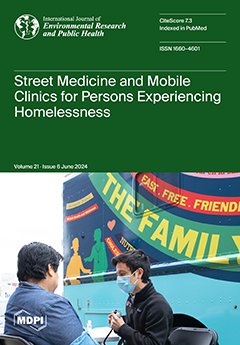This study presents the outcomes of a 5-year personalized integrative coaching program for adults with obesity (body mass index BMI ≥ 30 kg/m
2), based upon a systems health perspective, during the first 2 years. This longitudinal study, which had an evolutionary
[...] Read more.
This study presents the outcomes of a 5-year personalized integrative coaching program for adults with obesity (body mass index BMI ≥ 30 kg/m
2), based upon a systems health perspective, during the first 2 years. This longitudinal study, which had an evolutionary design, included all adults who enrolled in the program. Health-related quality of life (HRQoL) was measured with the Short Form-36 (SF-36), and physical outcomes included weight, waist circumference, aerobic capacity, lipid profile, and HbA1c. Subsequently, participants completed questionnaires (e.g., the Symptom Checlist-90 (SCL-90) and the Checklist Individual Strength (CIS)). Seventy-nine adults with a mean BMI of 39.5 kg/m
2 (SD 5.3) were included. Forty-four participants completed 2 years in the program. Compared to baseline, there were significant improvements in the SF-36 subscales ‘physical functioning’ (MD 9.9 points, 95% CI: 2.1–17.5,
p = 0.013) and ‘general health perceptions’ (MD 9.3 points, 95% CI 2.9–15.7,
p = 0.006). Furthermore, significant improvements in physical outcomes and psychosocial questionnaires (e.g., weight loss (MD 3.5 kg, 95% CI: 1.2–5.7,
p = 0.003), waist circumference (MD 5.1 cm, 95% CI: 2.4–7.8,
p < 0.001), and CIS fatigue (MD 6.8, 95% CI: 3.1–10.5,
p = 0.001) were observed. This study highlights the importance of a systems health perspective supporting the development of a personalized integrative coaching program for adults with obesity in a ‘real-world’ setting.
Full article





